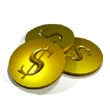 |
by Robert V. Rowe |
 |
|
It still, after too many years, comes as a revelation to me the number of players - even old timers - who have maintain a false concept of horse playing. Recently a reader wrote, " I appreciate the research and effort that has gone into your writings, but what good is it unless you tell how to get winners? It seems to me that whether one loses 2% or 23% in a series of bets that heís still losing ." A viewpoint such as this is not atypical. This type player is chasing a mirage; looking for a panacea, a magic something, an "Open Sesame" that will show the way to racing riches without need for judgment, experience or common sense. He fails to realize that successful racetrack betting, like successful poker playing, boils down to percentages. To beat the game you have to beat the percentages. Thereís no shortcut to racing profits. However, thereís one ingredient that remains constant. If you want profits you MUST find ways to overcome that formidable 23% "take and breakage" that the public is confronted with. This is the thrust of my book, How To Win At Thoroughbred Racing. It concentrates on seeking out the type play where the odds against the player, overall, are lower and thus easier to overcome than the 23% "nut" cited. Letís express this differently so thereís no misunderstanding. Your scribe has frequently made the analogy of imagining there are two race tracks at which a fan can bet. One takes 23% out of every dollar BEFORE EACH RACE. This means the player gets only seventy seven cents worth of action for his betting buck.. The other track takes only 2% out of every dollar. This obviously gives the player ninety eight cents worth of action. Is there any question as to which track gives the player the best chance to win? Itís relatively easy to overcome a 2 or even a 5% disadvantage, but it's near impossible to overcome a nut of 23 percent. My research aims at seeking plays that offer the lowest degree of percentages that work against me i.e., I seek bets that offer the best chance to win. Once a favorable situation comes along my good judgment, and common sense must then enter the fray. In effect, BEFORE attempting to handicap ask yourself is this a race that offers only a modest disadvantage or an unbeatable one? Effectively one should first handicap the dayís full card before knuckling down to handicapping a race. The key to determining a playable race is the favorite. As mentioned in our last edition there are "good" and "bad" favorites. Donít try to beat the good favorites.Consider them for exacta "keys." How though does one differentiate? Generally speaking (with many exceptions) a large field and the favorite held at odds of 9/5 on up, would be indications of a questionable public choice. This is the type races where one can logically bet against the favorite and go after price with a good chance to cash a straight bet. These are not good races for exacta play. Theyíre usually wide open affairs, not subject to thoughtful wagering. They represent the type race that encourages the player to create a "spread, " by playing a number of combinations trusting one will cash and produce an overall profit. Like my dear old daddy used to say, "It's a feeble reed to lean on." The best approach in a race of this type is to handicap the race. Find a key horse, (one with a good possibility) and hook it up with one or two others omitting the favorite.
Have a nice Holiday and look for HH NO. 20 to appear on or about Jan. 1st.
Visit the How To Win At Thoroughbred Racing Web site
|

